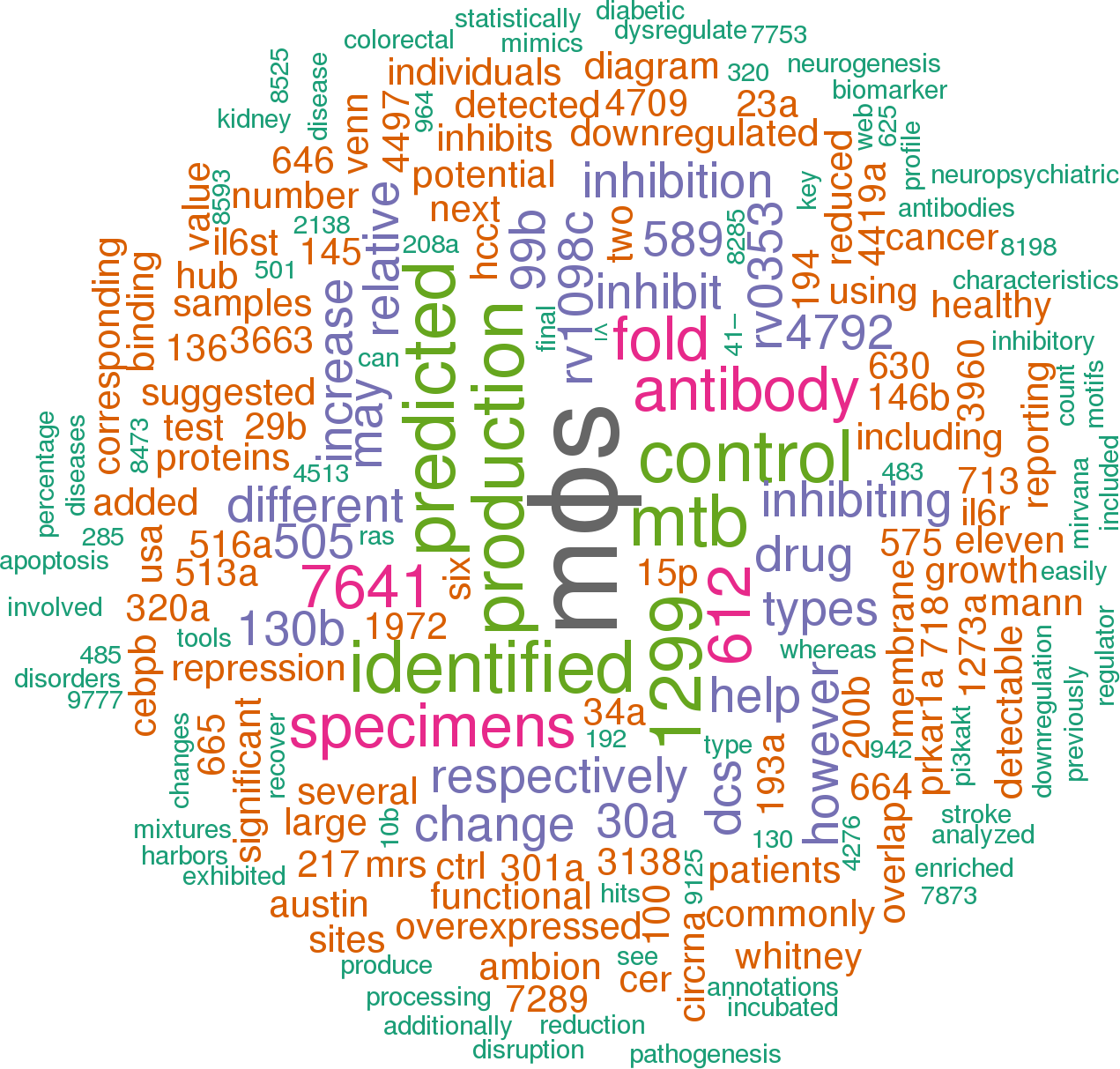Accession
MI0003651
Symbol
HGNC:
MIR636
Description
Homo sapiens
hsa-mir-636 precursor miRNA
Gene family
MIPF0000524;
mir-636
Literature search

11 open access papers mention hsa-mir-636
(33 sentences)
(33 sentences)
Sequence
94
reads,
19
reads per million, 32 experiments
uggcggccugggcgggagcgcgcgggcggggccggccccgcugccuggaauuaaccccgcUGUGCUUGCUCGUCCCGCCCGCAgcccuaggcggcgucg
..((.(((((((.....((..(((((((((((.(((..(((.((..((......))..)).)))...))).))))))))))).))))))))).))....
..((.(((((((.....((..(((((((((((.(((..(((.((..((......))..)).)))...))).))))))))))).))))))))).))....
Structure
--ug g cggga gc c -cc u cu aa
gc gccuggg gc gcgggcggggc ggc cgc gc gg u
|| ||||||| || ||||||||||| ||| ||| || ||
cg cggaucc cg CGCCCGCCCUG UCG GUG cg cc u
gcug g ----- -A C UUC U cc aa
Annotation confidence
Not enough data
Do you think this miRNA is real?
Comments
The mature sequence shown here represents the most commonly cloned form from large-scale cloning studies [2].
Genome context
chr17: 76736450-76736548 [-]
Disease association
hsa-mir-636 is associated with one or more human diseases in the Human microRNA Disease Database
| Disease | Description | Category | PubMed ID |
|---|
Mature hsa-miR-636
| Accession | MIMAT0003306 |
| Description | Homo sapiens hsa-miR-636 mature miRNA |
| Sequence | 61 - UGUGCUUGCUCGUCCCGCCCGCA - 83 |
| Evidence |
experimental
SAGE [1], cloned [2] |
References
|




